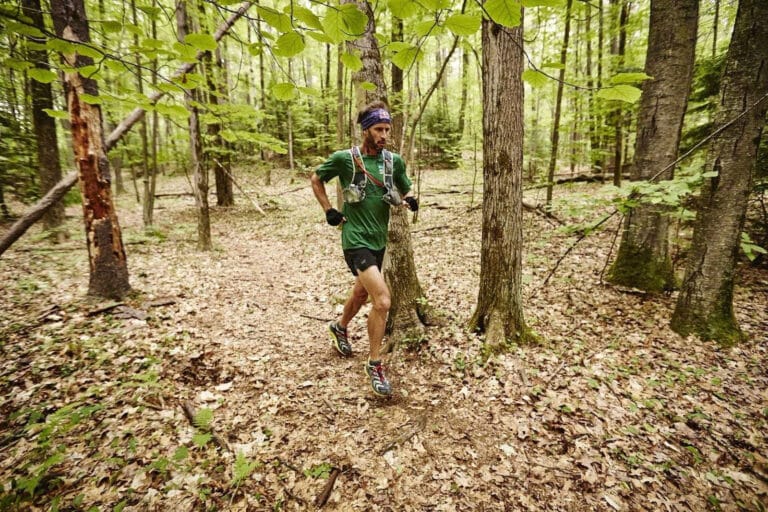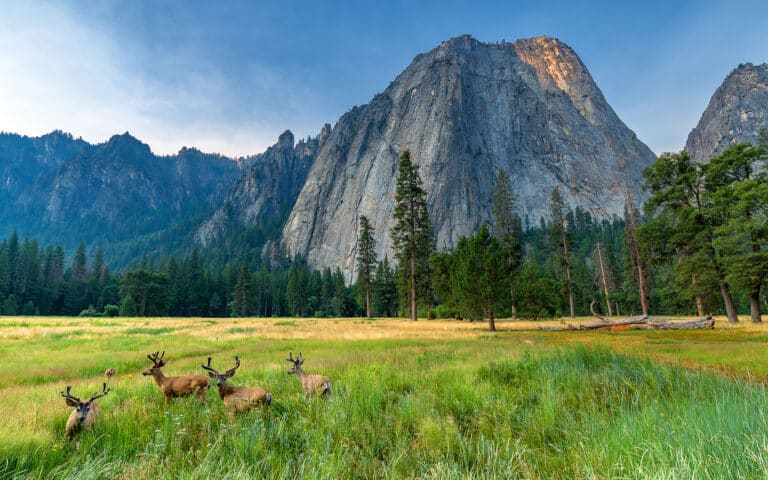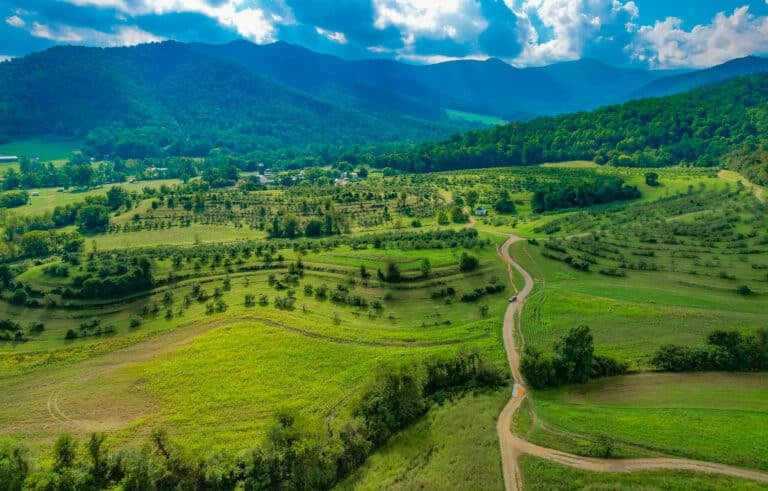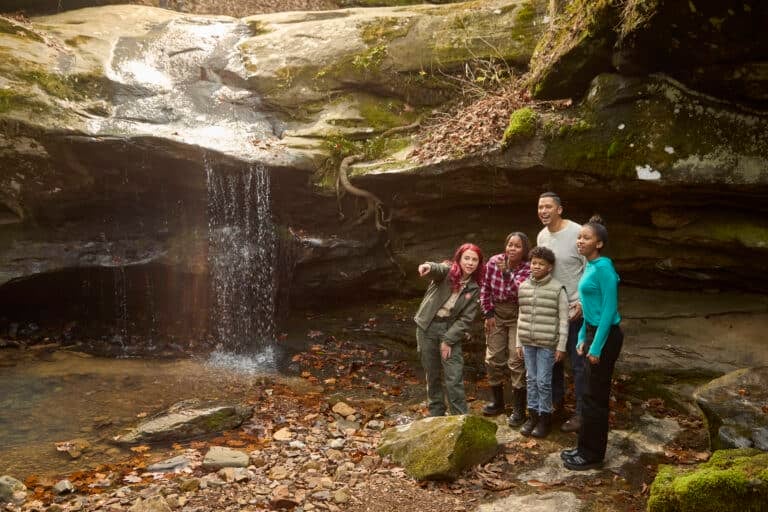by Jedd Ferris
Mountain removal mining has been called the systematic genocide of Appalachia—with a barrage of alarming statistics to its credit. Almost 500 named mountains have been completely destroyed. Over 1,500 miles of streams have been buried with the resulting waste. Over two million pounds of explosives are used in the South every day, and in West Virginia alone almost a half a million acres have been leveled. But as devastating as it is ecologically, there is more to this issue than a loss of beauty and scenery. There is a human cost.
At 52 years old, Loreli Scarbro has raised four children and would like nothing more than to spend her days relaxing in her peaceful mountain hollow, but instead she is in a fight for her health and home. Subsidiaries of Massey Coal have applied for permits to mine over 6,000 acres of Coal River Mountain. Trees on the ridgeline above Scarbro’s home already have been removed. Mining can be done within 300 feet of a home—a law that was put in place before mountaintop mining existed. If the right permit is granted, she will be forced to live with daily earth shattering blasts and the gradual decimation of the land that she has known all of her life. It would be enough to chase most people from their homes. But Scarbro isn’t going anywhere.
“This is my home, and the only reason it is in danger is profit,” she says. “I don’t understand why it’s okay for anyone to drive us out of our homes. People in Appalachia are being driven from their sense of place.”
On Scarbro’s daily drive to work she gets another reminder of the destruction in her community. In Montcoal she passes a cleared field that used to hold Marsh Fork High School, where her four kids earned their diplomas. The school was torn down so a coal company could start blasting the mountain right above it—an emblematic gesture of where her state’s priorities reside. Now instead of seeing the building that educated her children, she sees big earth movers gouging away large scapes of trees on the ridge.
This is what life has become in southern West Virginia. Every day good-natured mountain folk are being marginalized by profit mongers, who are being allowed to bomb people’s backyards for faster access to coal.
“We just want normal lives on the land that we know,” says Scarbro. “But everyday I drive by and watch them take a little more.”
—————
ROAD RAGE AND POISONED WELLS
Patty Sebok lives along Route 3, the main drag of the Coal River Valley in West Virginia. She and her family are lifelong residents of the coal belt, and her husband also gave almost 30 years of his life to the mines. She raised two kids in the small hollow of Prenter. For the past 20 years she has been forced into a battle with the same industry that signed her husband’s paychecks. It started in the late 80s when her safety was being continuously compromised by 18-wheeler trucks hauling tons of coal on the hollow’s tiny one-lane road. She says things got so bad that she was being forced off the road a minimum of three times per trip on her way into town, and then her community was devastated when a young family of four was killed in a coal truck accident. Repeated requests for drivers to slow down were met with threats and the occasional bottle being chucked out a truck window. According to state data, between 2000 and 2003, eighteen people were killed in accidents involving coal trucks in West Virginia.
But reckless driving wasn’t the only damage being done by the coal industry in Sebok’s community. After coal is mined, it needs to be cleaned before it can actually be burned, so it is washed with a mix of water and chemicals. Then the coal companies have to deal with the resulting sludge or slurry that is leftover from the cleaning process. It is either dammed in open hollows or injected into abandoned mines. After the dam is built it is filled with billions of gallons of toxic sludge, which has been proven to poison wells in the area.
A company Massey now owns injected slurry near Sebok’s community in the 70s and 80s, and independent tests revealed her well water had unusually high amounts of iron and manganese. The latter caused tooth damage to her entire family. A dentist told Sebok that at age 13 her son had the enamel loss of a 50-year-old man. She suffers from constant stomach pain and frequent bronchitis, another result of the manganese.
People in nearby hollows have murky water coming out of faucets and heaters. It ranges in color from black-grey to red-orange and even contains goops that resemble hair gel. Strange clusters of illness are rampant. In Laurel Creek handfuls of young children have blood in their urine. Cover your eyes, spin around, and point to any house in Sandlick, and you’ll find someone with a brain tumor. Up the road in Hopkins Fork, almost every resident’s gall bladder has had to be removed, and Sebok’s cousin, who lives in the hollow, was diagnosed with having a third kidney.
“We’re at a stand still,” says Sebok, 52. “We need our water tested because everyone is sick. People work in different places, so the only common denominator is the water. Everyone has similar problems, so there has to be a connection.”
But getting the wells tested independently would cost over one million dollars—too much for these small old mining towns. The state health department limits its water tests to bacteria and won’t spring for the cost of detection of heavy metals.
“I feel like they want us to go away or die,” she says. “When I ask for safe drinking water—something that my tax dollars are supposed to pay for—I’m called a radical extremist. All I want is a peaceful existence.”
Although industry likes to dismiss the health concerns of those living in the coalfields, a recent West Virginia University Study, which was published in April’s American Journal of Public Health, found that people living in the area are more likely to have chronic heart, lung, and kidney problems. Mining community residents in West Virginia have a 64 percent higher risk of ,, 70 percent higher risk of kidney disease, and are 30 percent more likely to have high blood pressure. Michael Hendryx, Ph.D., associate director of the WVU Institute for Health Policy Research, who headed the study, was able to correlate the rise of coal production with an increase in chronic illness, citing processing chemicals, explosives, and toxic impurities in coals. He also found that there are 313 excess deaths every year from coal-mining pollution.
“Residents of coal-mining communities have long complained of impaired health,” Hendryx said. “This study substantiates their claims. Those residents are at an increased risk of developing chronic heart, lung and kidney diseases.”
Sebok’s husband Butch has a high protein count in his urine. He also has black lung, high blood pressure, and circulation problems. He was hurt working for Peabody Coal and now has a case before the Supreme Court over being denied his worker’s compensation. To call all of this coincidence would be an insult to him and the other people that have literally given their lives to the coal industry.
“This is a human rights issue,” says Sebok. “But no one who can actually do anything about it wants to hear about it.”
—————
LIVING IN A WAR ZONE
Judy Bonds is a true coal miner’s daughter. Her family history in the industry goes back seven generations, but it was mountaintop removal that forced her from her family home. She was the last to evacuate Marsh Fork Hollow before it was completely taken over by Massey to turn it into an enormous toxic storage bin.For the better part of the past decade Bonds has been one of the most outspoken opponents of mountaintop mining, and her efforts have not gone unnoticed. She has had her story told by nearly every major national media outlet, ranging from Time Magazine to Oprah Winfrey’s O Magazine, and in 2003 she was awarded the prestigious Goldman Environmental Prize. As a result, she has helped her community action group Coal River Mountain Watch grow its staff to more than a dozen employees and extend its outreach across the country.
But the notoriety has come with a recent price. These days Bonds isn’t just fighting for her land that is being destroyed or her friends that are being poisoned. She is now fending off direct death threats.
Driving along Route 3, cars and pick-up trucks are branded with one of two stickers: “Friends of Coal” or “Friends of the Mountains.” For years the idea of taking a side didn’t disrupt the typical cordial nature of Southern hospitality.
But lately the coal industry’s blue-collar corporate soldiers have turned into harassing bullies. Recently Bond had to call the police because a miner and his wife were screaming at her outside her house in the middle of the night. Then a neighbor shot bottle rockets at her house. Her daughter was physically attacked by a miner’s wife. Even her grandson, who is an asthmatic as a result of inhaling coal dust, has had his life threatened. As a result she’s been forced to install surveillance cameras outside of her house.
“The coal companies are feeding their workers fear and telling them we want to take their jobs,” Bond says. “It’s made the situation quite volatile. This has turned neighbors on each other. I’ve been targeted. I’m not worried about myself, but I am worried about my family. I’m afraid to have my daughter and grandson ride in my car with me. I live in a war zone.”
Hostile actions were also recently extended to a church group. Last month a small organization called Christians for the Mountains, which works to conserve natural resources in the name of preserving God’s creation, decided to hold a prayer service on Gauley Mountain. A permit has already been given to Powellton Coal Company to blast the peak for surface mining. About 50 people decided to gather to pray for its salvation in a ceremony led by Reverend Roy Crist. Coal workers greeted the congregation by heckling the crowd and trying to block their way to the prayer site. Before things could turn violent, witnesses said Crist defused the situation by trying to shake hands with the miners and declaring, “There are no enemies here.”
The Gauley Mountain land that will be mined backs right up against the boundary of the New River Gorge National River, an epicenter of rock climbing, whitewater recreation, and a booming tourism spot that annually attracts 275,000 rafters, who are serviced by more than 40 independent outfitters. Today, recreation provides far more jobs than coal in West Virginia, and tourism ultimately could provide long-term prosperity to a region long victimized by boom-and-bust coal corporations that destroy communities’ natural resources and then leave them to clean up the mess.
—————
PLEADING TO POLITICIANS
Recently Loreli Scarbro went to Washington, D.C., to ask her congressman Nick Rahall for help. It was plausible to think Rahall might be a good candidate to offer assistance. He did, after all, write the legislation to introduce the New River Gorge into the National Park System, and he was a given a high 85 percent approval rating by the League of Conservation Voters. But King Coal and its lobbyists have lined Rahall’s pockets with campaign contributions over the years, and Scarbro quickly learned what side of the fence he’s on when it comes to mountaintop removal.
At first she was told Rahall was offsite at a meeting. Then right as she was about to leave she was told the congressman would see her. According to Scarbro, Rahall was abrasive and was quick to scold her for wasting her time. He said he would never agree with her side of the issue and that was the end of it.
“He sat there in his big office behind the desk that I pay for and yelled at me,” she says.
Another coal belt citizen has gone to even greater extremes to get the attention of his politicians. Yet another former coal employee, Ed Wiley was a mine inspector who had his eyes opened tby the chronic sickness of his granddaughter Kayla.
Kayla is a former student of Marsh Fork Elementary School. The school sits just 225 feet from a coal-loading silo, and independent tests have confirmed the presence of coal dust in the school. A dam holds back 2.8 billion gallons of toxic coal sludge just 400 yards from where the kids play at recess, and a 1,849-acre mountaintop removal coal mine surrounds the dam. A concerned teacher once taped a tissue outside of her window, and within a week it turned black from the coal dust in the air. Students complain of strange smells from the production chemicals, and as many as 20 children have been out of school sick in a single day. Kayla was one of them, and Wiley was being called in to pick her up on a regular basis. She was discolored, drowsy, and had a loss of appetite.
Wiley took his case all the way to the governor’s office, but after being ignored, he decided to try a new path. Two years ago this retired grandfather in his late 50s walked 455 miles from his state capital of Charleston to Washington, D.C. to get some answers from Senator Robert Byrd. Marsh Fork is still in the shadow of the silo, and Massey is fighting for a second silo—a battle that is going all the way to the Supreme Court. But Wiley has exposed his community’s plight through widespread national press. Just last month he was featured on the The Today Show, and his nonprofit Pennies for Promise, which was founded to build a new school for the students of Marsh Fork, has received donations from celebrities including Edward Norton and Woody Harrelson. He also just made an appearance with Al Gore at a Nashville screening of the award-winning documentary Mountain Top Removal.
“I just keep hammering away, hoping someone will listen,” says Wiley.
—————
REAL PEOPLE WITH REAL SOLUTIONS
For the past eight years the Bush Administration has relaxed almost every environmental law possible to make surface mining easy, so Scrarbro is hoping a new leader will finally take a stand. On May 13 she voted for Barack Obama in her state’s presidential primary, and she has followed up with letters to the candidate’s campaign headquarters to let him know what is going on in coal country. On the campaign trail Obama has been pandering to the industry’s greenwashed fallacy of so-called “clean coal,” but at least he has voiced opposition to mountaintop removal. Last year Obama asserted that “strip-mining is an environmental disaster….We have to find more environmentally sound ways of mining coal than simply blowing the tops off mountains.”
Bonds, Sebok, and Scarbro all realize that currently half of the country’s electricity comes from coal. But they believe that the way coal is collected should not put everyday people at risk, and renewable alternatives to coal should be pursued immediately. Through Coal River Mountain Watch, the women paid for an independent study and found out that Coal River Mountain has the right landscape and ridge location to be a viable wind farm. They are advocating a temporary return to underground mining, along with a transition to renewable energy sources. Politicians are touting the idea of green collar jobs, and there is no reason that West Virginia shouldn’t be a place to start preserving the rich ecological history of the Appalachians before it is completely wiped out.
“We advocate a quick transition to renewable energy,” says Bonds. “There’s a whole market for it, and it would put our people to work. Then we can still have our mountaineer culture and be a part of giving energy to the rest of the country. We’re not just fighting the problem. We have solutions.”







